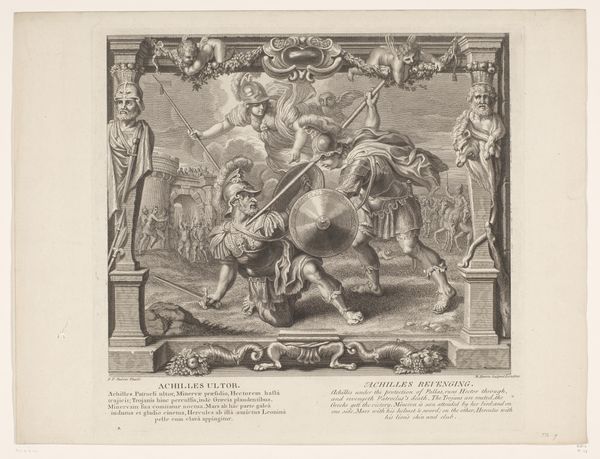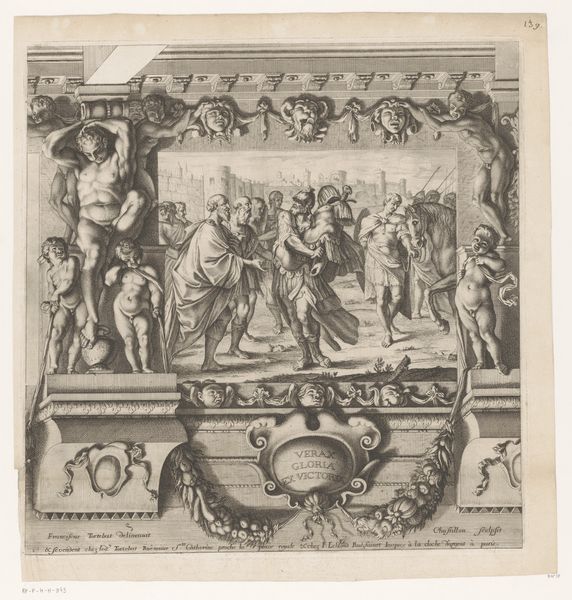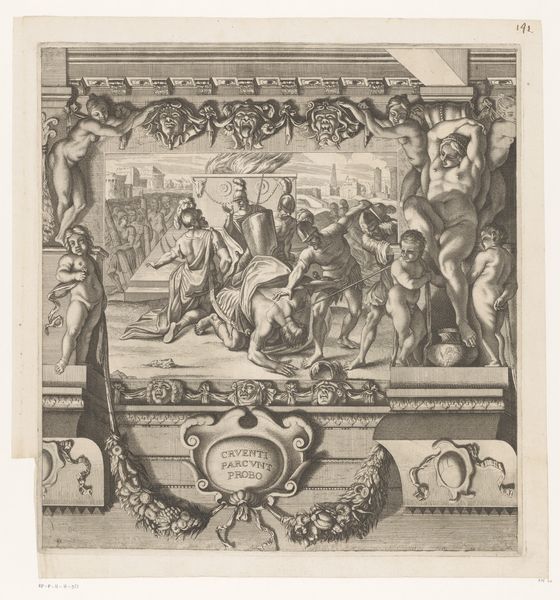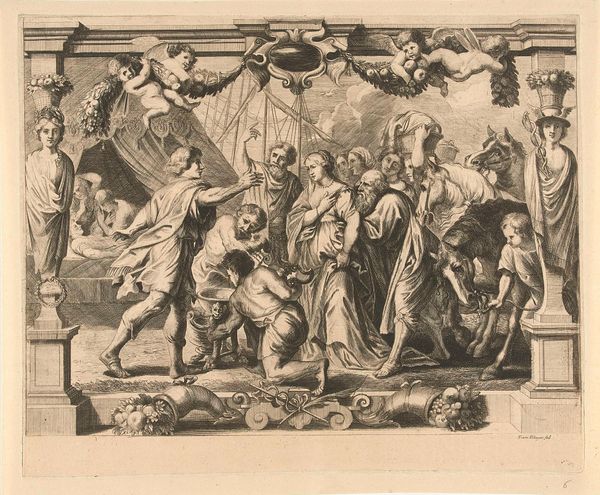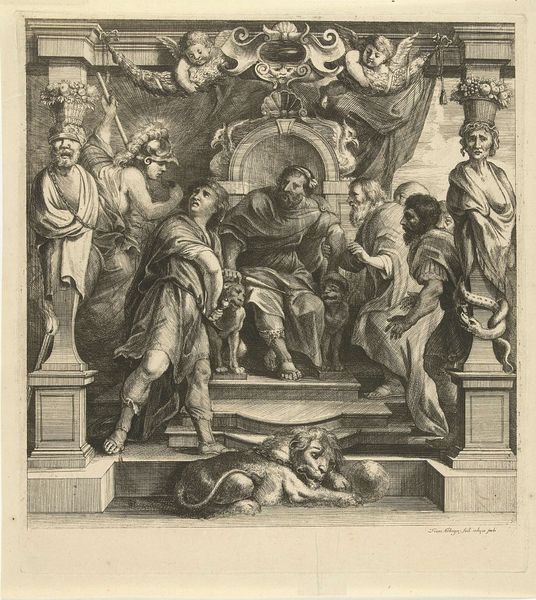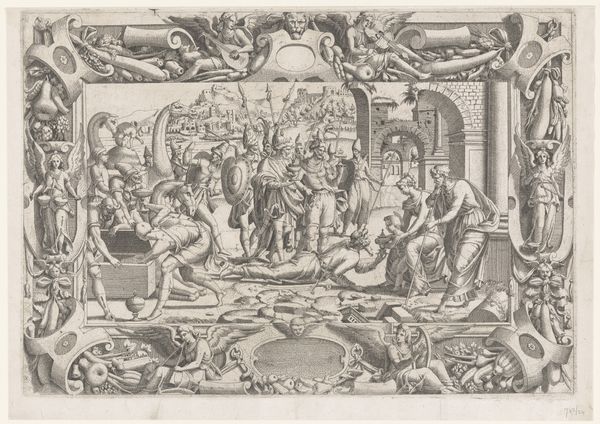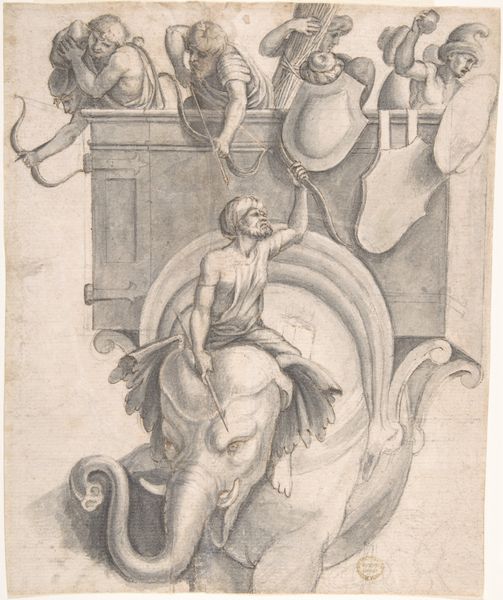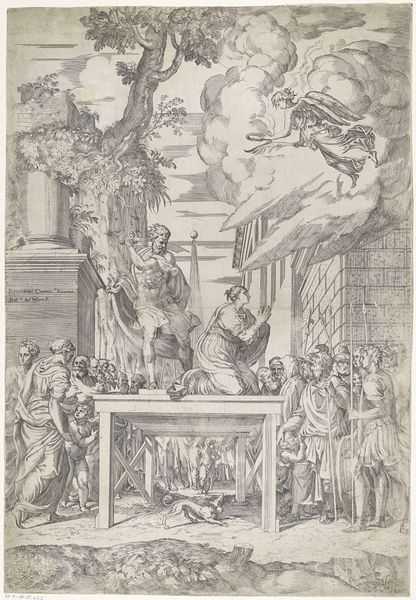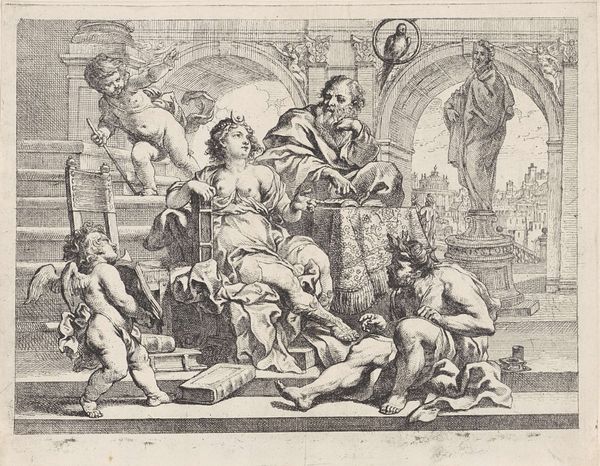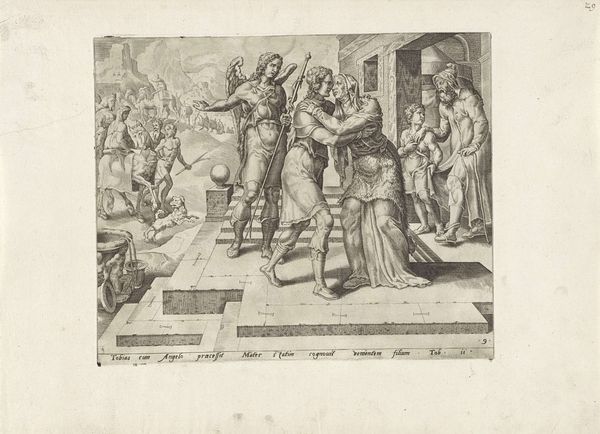
engraving
#
baroque
#
figuration
#
line
#
history-painting
#
academic-art
#
engraving
Dimensions: height 321 mm, width 341 mm
Copyright: Rijks Museum: Open Domain
Franz Ertinger created this print, "Achilles kills Hector," around 1640, using etching techniques. Ertinger, working in the 17th century, lived in a time in which depictions of conflict were very popular, reflecting a society deeply influenced by power struggles and religious conflicts. This print captures a pivotal moment from Homer's "Iliad," focusing on Achilles's revenge on Hector for killing Patroclus. The scene is charged with a sense of inevitable tragedy, as we know Hector's fate is sealed. The composition, filled with classical figures and allegorical elements, invites a reading of masculinity and heroism that is both glorified and questioned through the lens of the fatal consequences of war. The artist uses a combination of sharp lines and soft shading to create a dramatic effect, highlighting the emotional intensity of the scene. The symmetry of the figures, flanked by classical busts and cherubic figures, infuses the scene with a sense of history and moral reflection. It underscores the profound human costs of pride and vengeance.
Comments
No comments
Be the first to comment and join the conversation on the ultimate creative platform.
